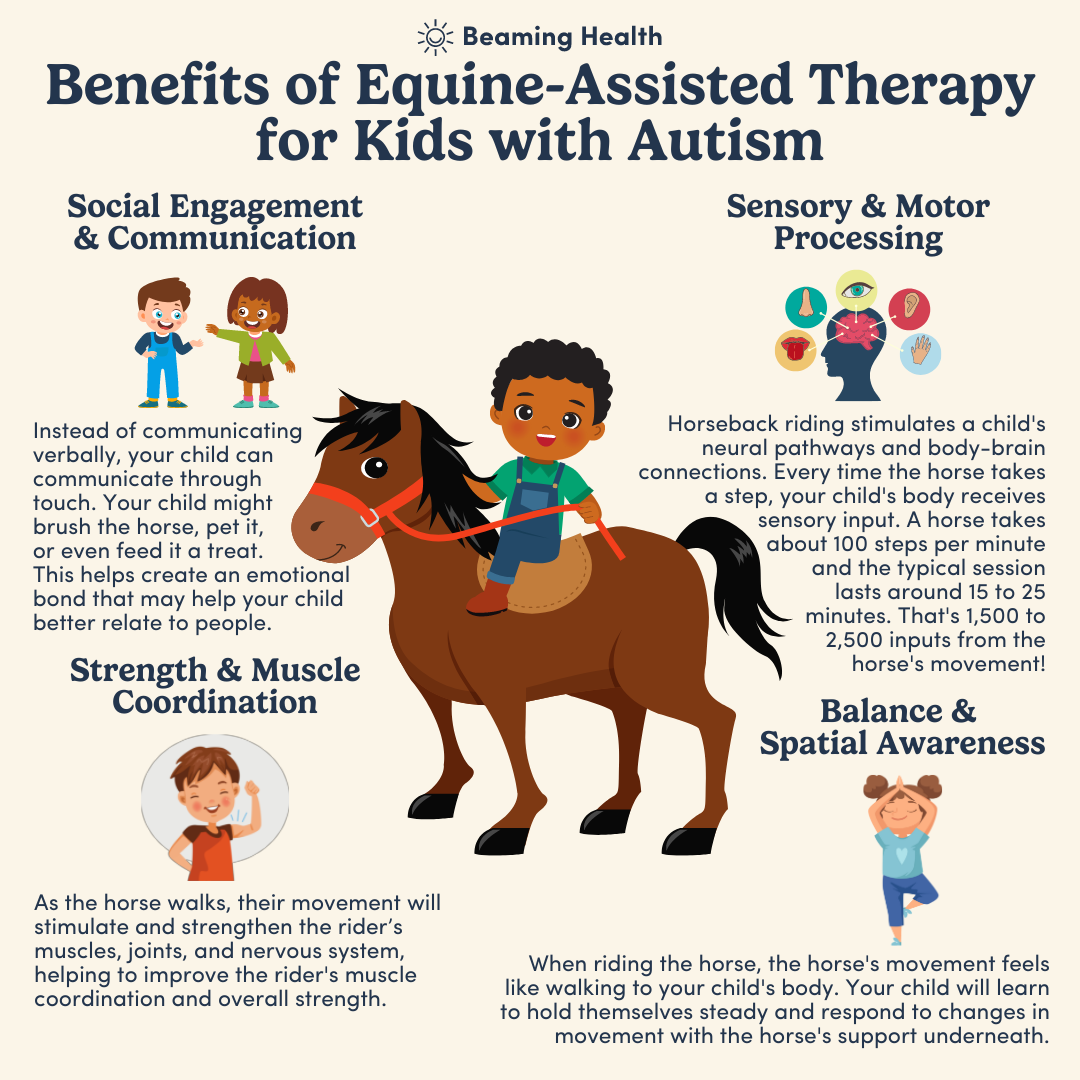Did you know that horseback riding can be a great activity for children? It not only provides a fun and exciting experience, but it also comes with numerous benefits. In this article, we’ll delve into the advantages of children engaging in horseback riding in a conversational way. Whether it’s physical or mental development, building confidence, or fostering a bond with animals, there’s so much to explore. So, keep reading to find out more!
When children participate in horseback riding, they get to enjoy a whole range of benefits. One of the most notable advantages is the physical development it offers. Riding a horse requires balance, coordination, and core strength, which can all contribute to a child’s overall fitness. It’s a great way to get them moving and active, all while having a blast! Additionally, horseback riding can also help improve posture and motor skills. But that’s not all – in future blog posts on our website, “http://horsebackridingdude.com”, we’ll dive even deeper into the physical benefits of horseback riding for children. Stay tuned to learn more!
Benefits of Children Engaging in Horseback Riding
Horseback riding is not just a fun activity for children; it also offers numerous physical, mental, cognitive, social, therapeutic, and educational benefits. From developing balance and strength to fostering confidence and improving cognitive skills, horseback riding provides a well-rounded experience for children. In this article, we will explore the various benefits associated with children engaging in horseback riding.
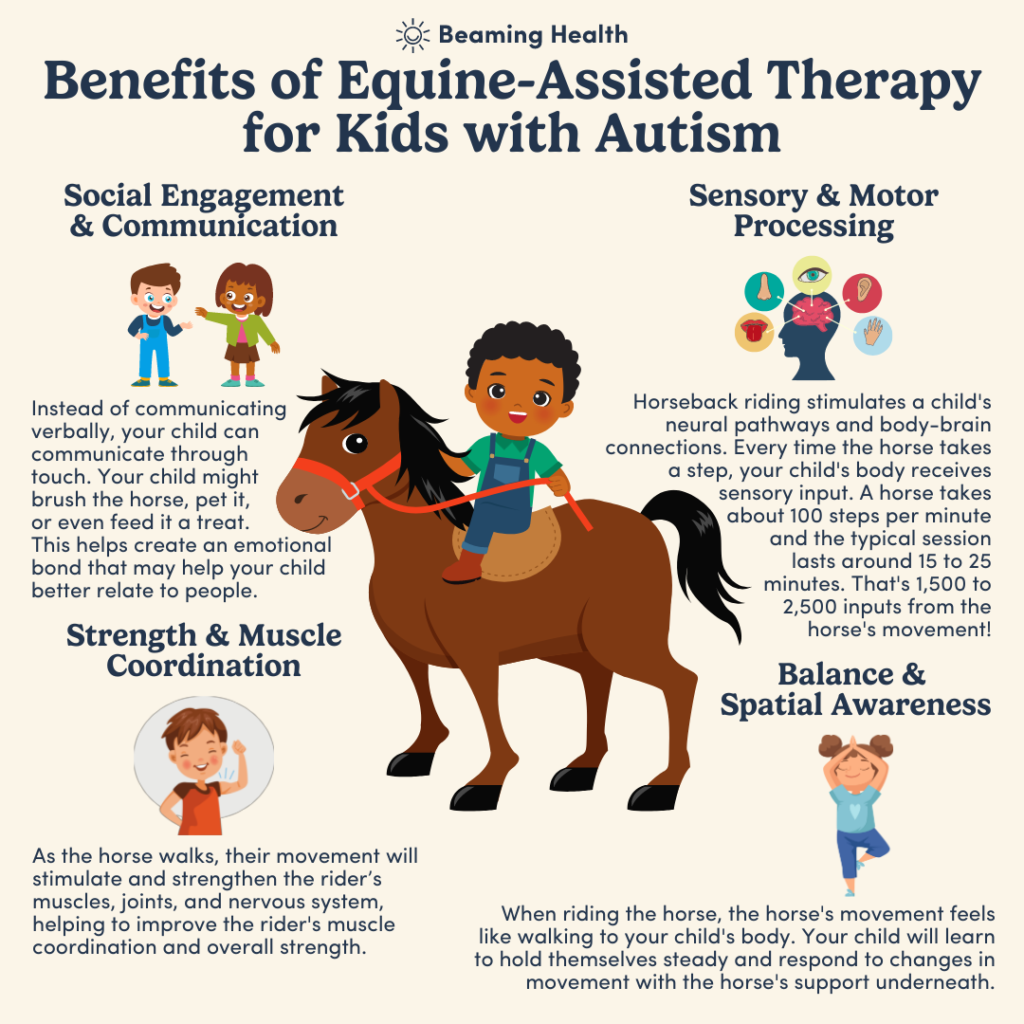
Physical Health Benefits
1. Improved Balance and Coordination
Horseback riding requires riders to maintain good balance and coordination. As children try to stay centered on the horse’s back, they learn to engage their core muscles and make subtle adjustments in their body position. This constant interaction with the horse helps improve their balance and coordination skills.
2. Development of Core Muscles
The rhythmic motion of riding stimulates the development of core muscles. The horse’s movement acts as a natural exercise for the abdominal and back muscles, helping children strengthen their core. Strong core muscles are essential for maintaining stability and posture, both on and off the horse.
3. Increased Stamina and Endurance
Horseback riding is a physically demanding activity that requires stamina and endurance. As children spend time in the saddle, they slowly build up their stamina and endurance levels. Regular riding sessions can significantly improve cardiovascular health and increase overall physical fitness.
4. Enhances Flexibility
The dynamic movements involved in horseback riding require riders to have a good range of motion and flexibility. As children learn different riding positions and perform exercises such as rising trot, they gradually increase their flexibility. This flexibility can benefit them in other physical activities and promote overall agility.
5. Strengthens Leg Muscles
Riding a horse engages the leg muscles, including the quadriceps, hamstrings, calves, and hip flexors. The continuous leg movement required to maintain proper positioning and control of the horse helps strengthen these muscles. Strong leg muscles contribute to better stability and balance in various daily activities.
Mental and Emotional Benefits
1. Boosts Confidence and Self-Esteem
Interacting with horses and successfully riding them can significantly boost a child’s confidence and self-esteem. As they learn to communicate with and control a powerful animal, they gain a sense of achievement and empowerment. The ability to command such a magnificent creature enhances their self-belief and helps overcome fear and self-doubt.
2. Develops Patience and Discipline
Riding horses requires patience and discipline. Children need to understand that progress takes time and effort. They learn the value of consistent practice, patience in working through challenges, and disciplined adherence to proper techniques. These qualities translate into other areas of their lives, enhancing their personal and academic growth.
3. Provides Stress Relief
Connecting with horses and being in nature can have a calming effect on children. Horseback riding allows them to disconnect from the pressures of everyday life and enjoy a stress-relieving experience. The rhythmic motion and the bond formed with the horse can provide a sense of serenity, reduce anxiety, and promote overall mental relaxation.
4. Enhances Emotional Bonding with Animals
Horses are intelligent and intuitive animals that offer unconditional companionship. Through horseback riding, children develop a deep emotional bond with their equine partners. This bond fosters empathy, compassion, and a greater understanding of animal behavior. Connecting with horses can also teach children to be more in tune with their own emotions and those of others.
5. Encourages Responsibility and Empathy
Caring for a horse and being responsible for its well-being instills a sense of responsibility in children. They learn the importance of daily feeding, grooming, and maintaining the horse’s living environment. The act of looking after a living creature helps children develop empathy, compassion, and a greater understanding of the needs of others.

Cognitive Benefits
1. Improves Cognitive Functioning
Studies have shown that horseback riding can improve cognitive functioning in children. The unique combination of physical and mental challenges involved in riding stimulates the brain, enhancing focus, problem-solving skills, memory, and overall cognitive abilities. Riding also promotes the development of spatial awareness and enhances the ability to anticipate and respond to new situations.
2. Enhances Problem-Solving Skills
Riding a horse requires riders to think critically and make quick decisions. They need to assess the horse’s behavior, respond to its cues, and adapt their riding technique accordingly. This constant problem-solving process strengthens children’s ability to think on their feet and make effective decisions, both in and out of the saddle.
3. Increases Concentration and Focus
To ride a horse effectively, children must maintain constant focus and concentration. They need to be aware of their position, the horse’s movements, and their surrounding environment. This heightened level of concentration carries over to other aspects of their lives, improving their academic performance and their ability to concentrate on tasks.
4. Stimulates Creativity and Imagination
Horseback riding can spark creativity and imagination in children. As they learn to communicate with and control their horse, they may come up with unique solutions to challenges. Riding in different settings, such as trails or jumping courses, provides opportunities for imaginative play. This creative aspect of horseback riding enhances children’s problem-solving skills and encourages them to think outside the box.
5. Promotes Critical Thinking
When children ride horses, they need to evaluate situations and make decisions based on the horse’s behavior and the surrounding environment. This crucial thinking process helps them anticipate and respond to changes, improving their critical thinking skills. Horseback riding provides a platform for children to assess risks, prioritize tasks, and make safe choices.
Social Benefits
1. Builds Peer Relationships
Engaging in horseback riding opens up opportunities for children to meet and interact with other riders. Whether they are attending group lessons or participating in horse-related events, they can build meaningful peer relationships. Sharing a common interest and working together towards shared goals fosters friendship and camaraderie among riders.
2. Fosters Teamwork and Cooperation
In certain riding scenarios, such as team-based competitions or equestrian games, children learn the importance of teamwork and cooperation. They have to work with their fellow riders, communicate effectively, and coordinate their efforts to achieve success. These collaborative experiences contribute to the development of essential teamwork skills.
3. Encourages Effective Communication
Horseback riding requires clear and effective communication between horse and rider. Children quickly learn that their body language, voice, and cues impact the horse’s response. Developing effective communication with the horse teaches children the significance of non-verbal communication and helps them become more attuned to subtle body language and cues from others.
4. Develops Sportsmanship and Respect
Participating in horseback riding activities teaches children about sportsmanship and fair play. They learn to celebrate victories with humility and accept defeats graciously. Additionally, being around horses teaches children to respect animals and their needs. Treating horses with kindness and care translates into respect for others and a greater appreciation for nature.
5. Cultivates Leadership Skills
Horseback riding provides opportunities for children to take on leadership roles. Whether it’s assisting younger riders, caring for horses, or leading a group trail ride, they can develop leadership skills. Leading a horse requires confidence, clear communication, and the ability to make decisions. These leadership experiences can shape children into confident and responsible individuals.
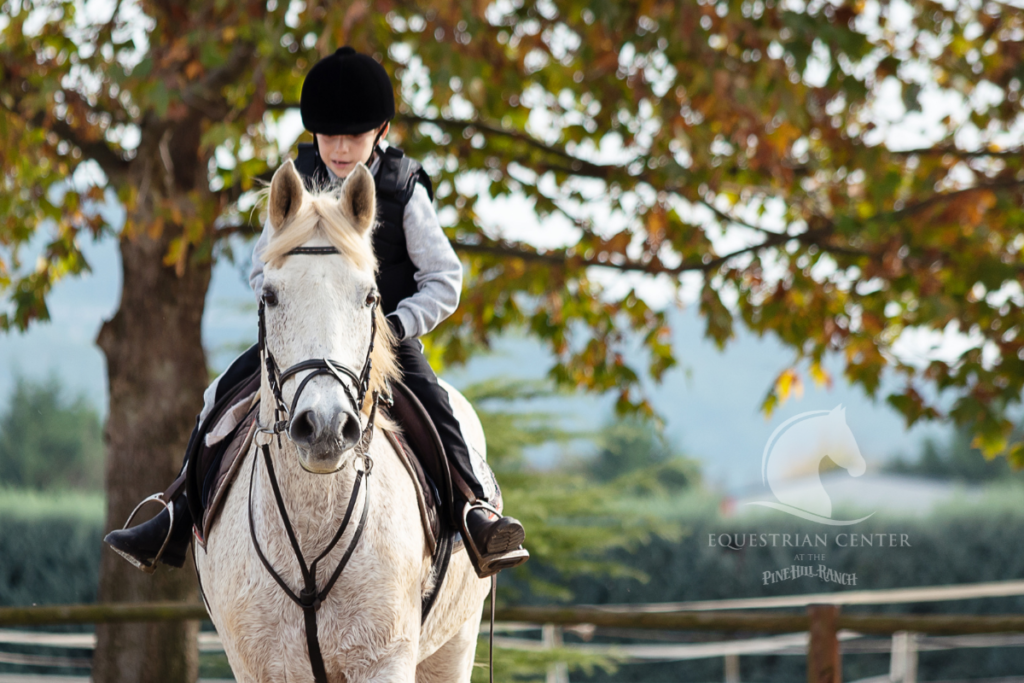
Therapeutic Benefits
1. Equine-Assisted Therapy
Horseback riding is often used as part of therapeutic interventions for individuals with physical, emotional, or cognitive disabilities. Equine-assisted therapy aims to improve balance, coordination, strength, and overall well-being. The rhythmic motion of the horse can stimulate muscles, improve posture, and enhance overall muscle tone.
2. Supports Individuals with Special Needs
Horseback riding can have profound benefits for individuals with special needs. It provides an inclusive and empowering activity that offers physical, emotional, and cognitive improvements. Riding can help individuals with conditions such as autism, cerebral palsy, and Down syndrome build confidence, improve motor skills, and promote social interaction.
3. Improves Motor Skills
Riding a horse involves a combination of gross and fine motor skills. Gripping the reins, coordinating leg aids, and maintaining balance help improve fine motor skills. The rhythmic movement of the horse stimulates the muscles, promoting gross motor skills such as coordination and core strength.
4. Boosts Cognitive Abilities
Equine-assisted activities and therapies have been shown to improve cognitive abilities in individuals with disabilities. Working with horses can enhance attention, memory, problem-solving, and decision-making skills. The non-judgmental nature of horses provides a safe and supportive environment for individuals to develop and strengthen their cognitive abilities.
5. Reduces Anxiety and Depression
Interacting with horses and engaging in horseback riding can have a therapeutic effect on individuals struggling with anxiety and depression. The serene environment and the bond formed with the horse can offer emotional support and reduce symptoms of anxiety and depression. The rhythmic motion of riding also has a calming effect on the nervous system.
Educational Benefits
1. Teaches Responsibility and Discipline
Horseback riding teaches children the value of responsibility and discipline. They learn that caring for a horse requires everyday commitments, such as feeding, grooming, and stable maintenance. The routine nature of these tasks helps children understand the importance of responsibility and the impact of consistent effort.
2. Enhances Learning Opportunities
Engaging in horseback riding provides children with countless learning opportunities. From understanding horse anatomy and health to learning about different riding styles and techniques, children gain knowledge in various areas. Riding can ignite their curiosity and encourage them to explore subjects such as equine science, veterinary medicine, and equestrian history.
3. Provides Environmental Awareness
Horseback riding allows children to spend time in nature and develop a sense of environmental awareness. They learn to appreciate the natural beauty of their surroundings and recognize the importance of preserving it. Through riding lessons and trail rides, children gain an understanding of environmental conservation and sustainable practices.
4. Promotes Historical and Cultural Knowledge
Horseback riding has deep historical and cultural roots. Engaging in this activity exposes children to equestrian traditions and the rich history of horsemanship. Learning about different horse breeds, riding techniques, and cultural equestrian practices broadens their knowledge and appreciation for diverse traditions and cultures.
5. Develops Horsemanship Skills
Horseback riding provides an opportunity for children to develop horsemanship skills. They learn how to properly care for horses, tack them up, and maintain their equipment. Acquiring these skills not only enhances their understanding of horse care but also cultivates a lifelong love and respect for horses.
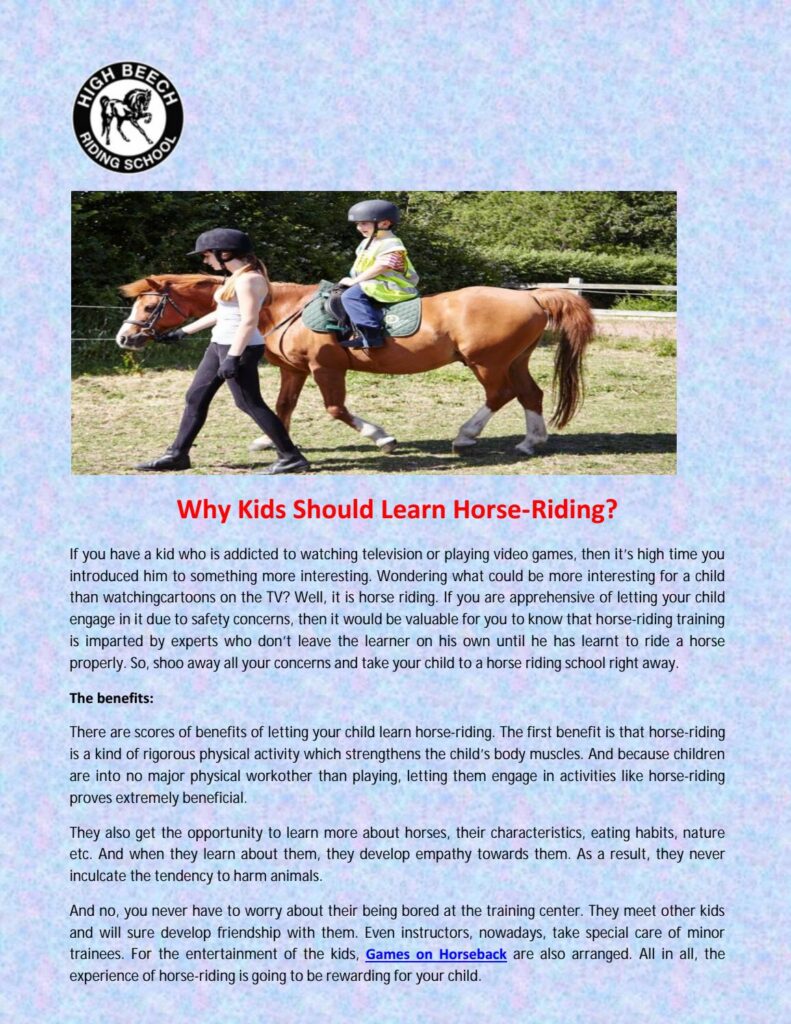
Safety Precautions
1. Wearing a Properly Fitted Helmet
Safety should always be a priority when engaging in horseback riding. Children must wear properly fitted helmets that meet safety standards. Helmets protect the head from potential injuries in case of a fall or accident. Regular helmet checks and replacements are essential to ensure optimal protection.
2. Proper Supervision and Instruction
Children should receive proper supervision and instruction when participating in horseback riding activities. Trained professionals and experienced instructors can guide them through proper riding techniques, safety protocols, and horse handling. Adult supervision is crucial to ensure the child’s safety and prevent accidents.
3. Maintaining Proper Equipment and Gear
Regular maintenance of equipment and gear is essential for safe horseback riding. Tack should be inspected regularly for any signs of wear and tear. Properly fitting saddles, stirrups, and reins ensure the child’s comfort and safety during rides. Regular cleaning and inspection of equipment help identify potential hazards and prevent accidents.
4. Understanding Basic Riding Techniques
Children should be taught basic riding techniques before mounting a horse. They should learn how to maintain a balanced seat, hold the reins correctly, and give proper cues to the horse. Basic riding techniques not only improve safety but also help the child effectively communicate with the horse.
5. Regular Health Check-ups for Horses
Horses participating in horseback riding programs should receive regular health check-ups. This includes veterinary care, dental care, and farrier services. Regular check-ups ensure that the horses are healthy and fit for riding. Identifying any health issues early on can prevent injuries and promote the well-being of the horses.
Choosing the Right Horse Riding Program
1. Consider the Child’s Age and Experience
When selecting a horse riding program for a child, it is important to consider their age and previous experience with horses. Some programs are tailored specifically for younger riders and offer a more introductory approach, while others may be more advanced. Assessing the child’s abilities and preferences can help find the right program for their needs.
2. Evaluate the Training Facility and Instructors
The training facility and instructors play a vital role in a child’s riding experience. Visit the facility and observe the condition of the stables, the safety measures in place, and the overall professionalism of the staff. Inquire about the qualifications and experience of the instructors to ensure that they are knowledgeable and capable of providing effective instruction.
3. Assess the Safety Measures in Place
Safety should be a top priority when choosing a horse riding program. Inquire about the safety protocols followed by the program, such as the use of protective gear, emergency procedures, and horse handling techniques. Programs that prioritize safety and have clear guidelines in place provide a secure environment for children to learn and ride.
4. Determine the Program’s Approach and Philosophy
Different horse riding programs have different approaches and philosophies. Some focus on competitive riding, while others prioritize recreational riding and horsemanship skills. Consider the child’s goals and interests when selecting a program. Inquire about the teaching methods and curriculum to ensure that it aligns with the child’s desires and expectations.
5. Read Reviews and Seek Recommendations
Before finalizing a horse riding program, read reviews and seek recommendations from other parents or riders. Online platforms, social media groups, and local equestrian communities can provide valuable insights into the quality of various programs. Personal recommendations from trusted sources can help narrow down the options and ensure a positive experience for the child.
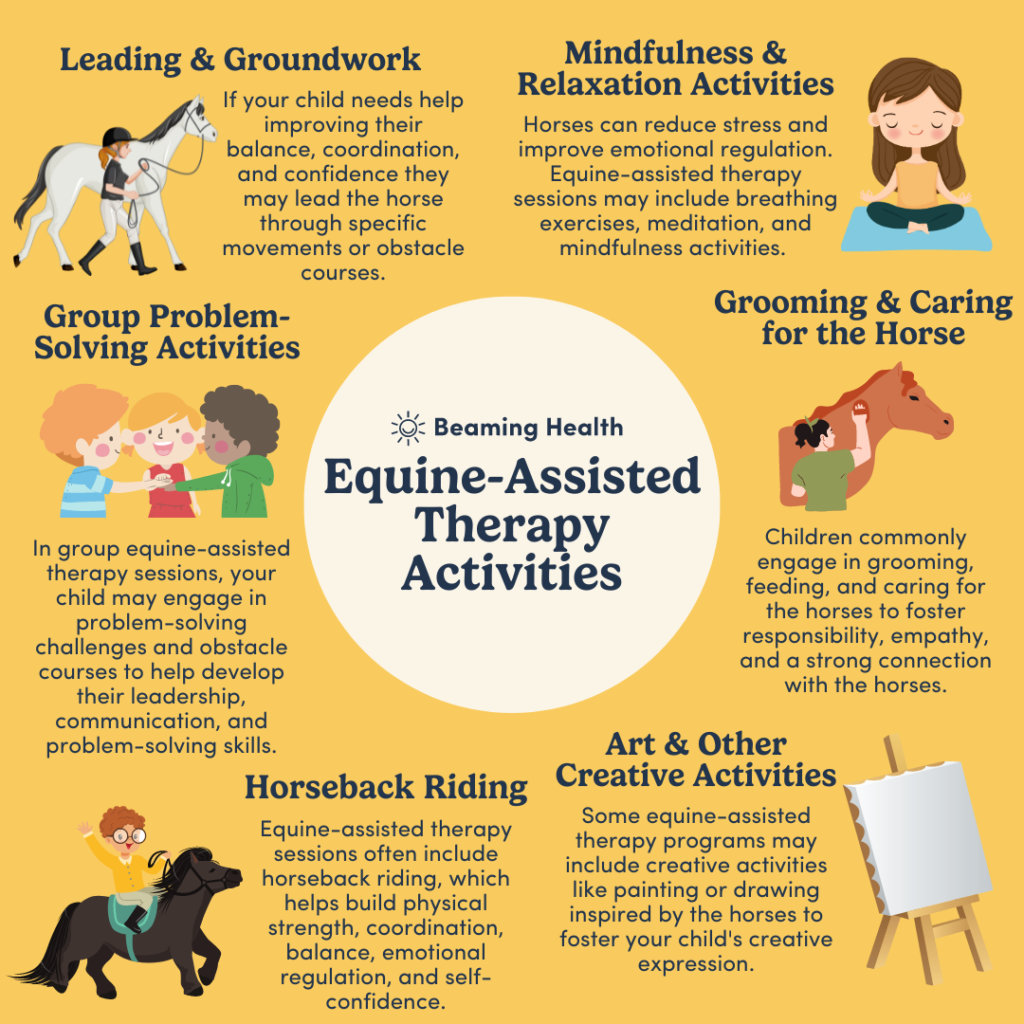
Preparing for Horseback Riding
1. Basic Safety Preparations
Before engaging in horseback riding, it is important to familiarize children with basic safety preparations. Teach them how to approach a horse safely, where to stand, and how to move around the horse. Setting clear safety rules and guidelines helps children understand the importance of being cautious and taking necessary precautions.
2. Understanding Horse Behavior and Body Language
Understanding horse behavior and body language is crucial for safe riding. Teach children how to read a horse’s mood and anticipate its reactions. They should learn to recognize signs of discomfort, fear, or aggression in the horse. This understanding helps children respond appropriately and maintain a safe and harmonious partnership with the horse.
3. Proper Clothing and Equipment
When preparing for horseback riding, children should wear appropriate clothing and equipment. Close-toed shoes with a small heel are recommended to prevent the foot from slipping through the stirrup. Comfortable pants or leggings are preferable to ensure ease of movement. Additionally, helmets and riding gloves should be worn for added safety.
4. Stretching and Warm-up Exercises
To prepare for horseback riding, children should engage in stretching and warm-up exercises. Stretching helps loosen up the muscles and increase flexibility, reducing the risk of strains and injuries. Simple exercises such as leg swings, arm circles, and torso twists can help warm up the body and prepare it for the physical demands of riding.
5. Establishing Trust and Bonding with the Horse
Building a bond of trust between the child and the horse is essential for a positive riding experience. Encourage children to spend time with the horse, grooming and bonding with them. This helps create a sense of familiarity and establishes a foundation of trust and respect between the child and the horse.
Learning Horseback Riding Techniques
1. Mounting and Dismounting
Learning how to properly mount and dismount a horse is the first step in horseback riding. Children should be taught the correct technique, starting with positioning the body next to the horse and using a mounting block if necessary. They should also learn how to dismount safely, sliding down gently and landing softly on the ground.
2. Basic Riding Positions
Children should learn the basic riding positions, including the walk, trot, and canter. They should understand how to sit tall and relax their body, maintaining a balanced seat. Proper posture, alignment, and leg position contribute to effective communication with the horse and better control of the horse’s movements.
3. Controlling the Horse’s Speed and Direction
Riders need to learn how to control the horse’s speed and direction. Children should understand how to use their reins and leg aids to guide the horse. They should learn how to apply gentle pressure with their legs to ask the horse to move forward and how to use rein length and hand movements to steer the horse.
4. Performing Walk, Trot, and Canter
Children should be taught how to perform the walk, trot, and canter, which are the three main gaits in horseback riding. They should learn how to cue the horse for each gait and how to maintain their balance and position while the horse is in motion. Mastering these gaits allows riders to progress to more advanced riding techniques.
5. Executing Basic Jumping Techniques
For riders interested in jumping, children can be taught basic jumping techniques. They should learn how to approach a jump safely, maintain their position over the fence, and land smoothly. Jumping exercises can develop their coordination, timing, and confidence in tackling obstacles.
Exploring Different Riding Styles
1. English Riding Style
English riding style focuses on elegance, finesse, and precision. Riders use a lightweight saddle and hold the reins with both hands. English riding encompasses various disciplines, including dressage, show jumping, and eventing.
2. Western Riding Style
Western riding style originated from the ranching traditions of the American West. It emphasizes comfort and practicality. Western riders use a larger saddle with a horn, hold the reins in one hand, and focus on leisurely riding or activities such as reining and barrel racing.
3. Dressage
Dressage is a highly skilled and disciplined form of riding. It focuses on the rider’s ability to communicate subtle cues to the horse for precise movements. Dressage riders strive for harmony, balance, and precision in their horse’s gaits and movements.
4. Show Jumping
Show jumping showcases the athleticism and precision of horse and rider as they navigate a course of fences. Show jumpers require excellent timing, balance, and accuracy to clear the obstacles within a designated time.
5. Trail Riding
Trail riding offers a relaxed and scenic riding experience. It allows riders to explore nature and enjoy leisurely rides along trails and through various terrains. Trail riding is an excellent opportunity for riders to connect with nature and experience the bond formed with their horse in a serene setting.
Enjoying Horseback Riding Activities
1. Participating in Pony Games
Pony games are a fun and interactive way for children to enjoy horseback riding. These games involve various activities and challenges, such as barrel racing, pole bending, and relay races. Pony games promote friendly competition and skill development while keeping the riding experience engaging and enjoyable.
2. Trail Riding Adventures
Trail riding adventures allow children to explore new landscapes and enjoy outdoor adventures on horseback. They can discover scenic trails, enjoy the tranquility of nature, and experience the thrill of riding through different terrains. Trail riding offers a refreshing break from the arena and provides an opportunity for riders to bond with their horse in a natural environment.
3. Horse Shows and Competitions
Horse shows and competitions provide children with opportunities to showcase their riding skills and compete against other riders. Participating in these events can be both challenging and rewarding. Horse shows allow children to set goals, experience healthy competition, and gain confidence in their abilities.
4. Camping with Horses
Camping with horses combines the joy of camping with the thrill of horseback riding. Children can enjoy overnight stays in horse-friendly campsites, participate in group rides, and immerse themselves in the equestrian lifestyle. Camping with horses fosters a sense of adventure and allows children to form lasting memories with their equine friends.
5. Horseback Riding Holidays
Horseback riding holidays offer a unique way for children to experience new destinations while enjoying their passion for riding. Whether it’s exploring scenic trails in the countryside or riding along pristine beaches, horseback riding holidays offer unforgettable experiences for young riders. These trips provide opportunities for cultural exchange, adventure, and horse-centered activities.
Maintaining Horse Health and Welfare
1. Proper Feeding and Nutrition
Maintaining proper feeding and nutrition is vital for the health and welfare of horses. Children should learn about a horse’s dietary needs and understand the importance of providing a balanced diet. They should be aware of the recommended types and quantities of feed, as well as the importance of access to fresh water and forage.
2. Regular Exercise and Turnout
Horses require regular exercise and turnout to maintain their physical and mental well-being. Children should learn about the importance of regular exercise routines for horses and the benefits of turnout in a safe and suitable environment. They should be mindful of providing daily opportunities for horses to move freely and engage in natural behaviors.
3. Grooming and Care
Grooming is an essential aspect of horse care. Children should learn how to groom horses properly, including brushing the coat, cleaning hooves, and removing dirt and debris. Regular grooming not only keeps the horse’s coat clean and healthy but also fosters the bond between the child and the horse.
4. Routine Veterinary and Farrier Care
Children should understand the importance of routine veterinary and farrier care for horses. Regular veterinary check-ups, vaccinations, dental care, and parasite control are necessary for maintaining a horse’s health. Farrier visits to maintain hoof health and ensure proper shoeing or trimming should also be considered part of routine horse care.
5. Recognizing Signs of Illness or Distress
Children should learn to recognize signs of illness or distress in horses. Understanding common symptoms such as changes in appetite, lameness, or changes in behavior can help identify potential health issues early on. Promptly seeking veterinary assistance or consulting a knowledgeable adult can prevent further complications and ensure the well-being of the horse.
Conclusion
Engaging in horseback riding offers children a multitude of physical, mental, cognitive, social, therapeutic, and educational benefits. From improving balance and coordination to fostering confidence and empathy, horseback riding provides a holistic experience that positively impacts a child’s development. By exploring different riding styles, participating in various activities, and maintaining horse health and welfare, children can fully embrace the joys and benefits of horseback riding.
Remember to always prioritize safety and choose the right horse riding program that aligns with the child’s age, experience, and goals. With proper guidance and instruction, children can embark on a rewarding journey of horseback riding, creating lasting memories and lifelong passion for these magnificent animals.
*Note: This article is for informational purposes only and should not replace professional advice or training from qualified instructors or medical professionals.
